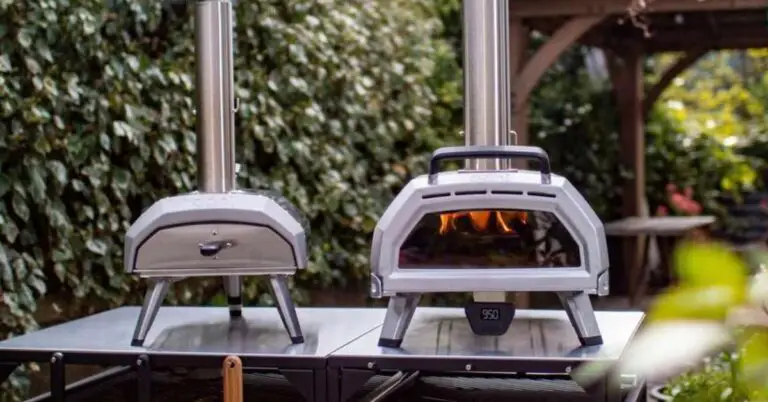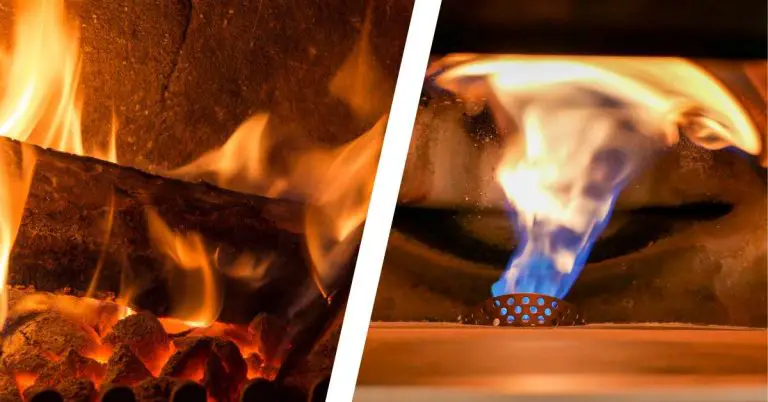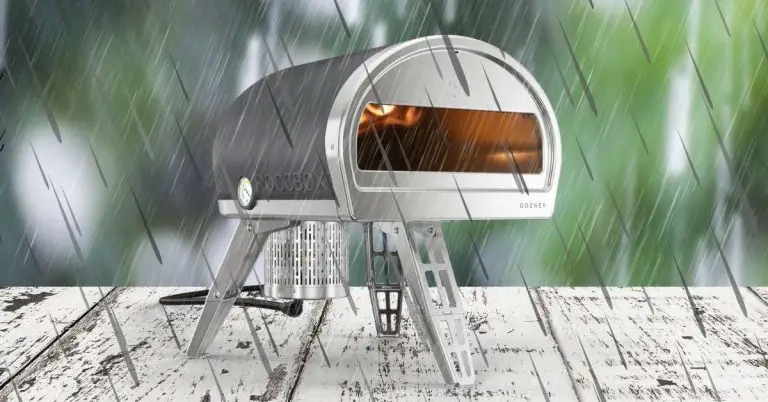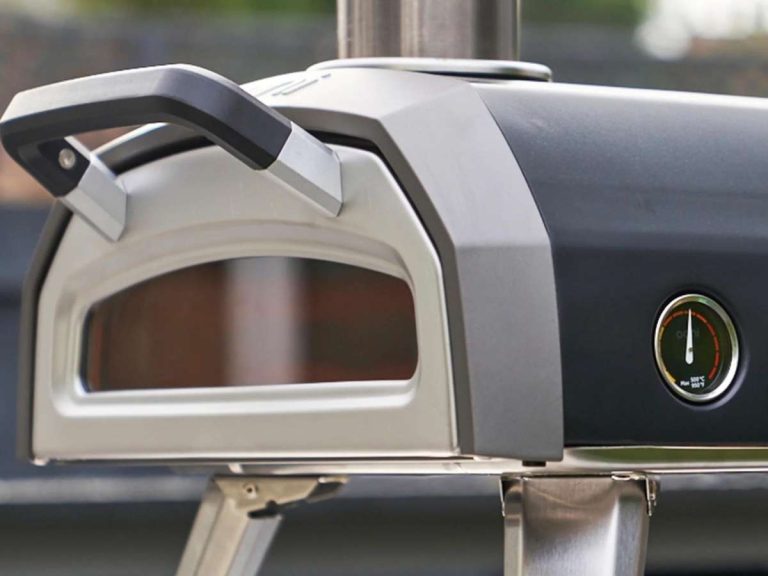Is Wood-Fired Pizza Healthier? Why Wood-Fired Pizza Is (And Isn’t) Healthier Than Regular Pizza
Who doesn’t love pizza wood-fired pizza cooked in a authentic pizza oven? It tastes great, it looks great, and it’s fun to watch it cook next to the flames. But does this traditional style offer any health benefits compared to regular pizza?
While wood-fired pizza typically features healthy toppings, the cooking method itself doesn’t drastically improve nutrition. The biggest factor that affects the healthiness of any pizza is the ingredients used to make it.
Another reason why wood-fired pizza tends to be healthier than fast-food pizza is its smaller size, fewer and cleaner ingredients, and its focus on healthy toppings. The fact that it’s cooked by a flame doesn’t really make a difference in terms of health.
If you’re looking for a great pizza oven that doesn’t burn wood, check out the Ooni Koda 12 propane pizza oven. You get all the major benefits of a high-temperature pizza oven without the smoke.
Keep reading for more information and key facts about the health implications of wood-fired pizza.

Simple Ingredients Make Wood-Fired Pizza Healthier
Wood-fired pizza is the “original” style of pizza that came from Naples, Italy, sometime during the 18-19th centuries. The super-high heat generated by burning wood is the perfect fuel for getting a crispy and charred crust that’s still soft and moist in the middle.
Neapolitan pizza makers also favor simple, fresh ingredients like fresh mozzarella, tomatoes, and freshly cut herbs. This contrasts with the fatty, salty, and oily highly-processed toppings found on most “regular” American style pizzas— especially at the big fast-food chains.
This choice of ingredients is ultimately the main reason why wood-fired pizza is generally healthier than other styles.
For Italians, wood-fired pizza represents culture, tradition, and quality ingredients. This art of making Neapolitan-style pizza has been passed down for generations—and thank goodness for that.
Today, restaurants around the world aim to recreate authentic wood-fired pizza. Some even import specialized ovens straight from Italy that reach over 900°F, cooking the pizza in as little as 60-90 seconds at a time.
The hand-stretched dough and fresh toppings of a typical wood-fired pizza create a lighter, crispier pizza that’s hard to match.
But does the cooking method actually improve the nutrition profile? Let’s take a closer look.
Related Post: How to use a wood-fired pizza oven
Wood-fired pizza is usually lighter than regular pizza

At first glance, wood-fired pizza appears more nutritious given its thin crust and vegetable-packed toppings. The lighter dough means fewer refined carbohydrates compared to a thick, bready crust.
Think about it—when you order a pizza from a big chain, the box is usually soaked in grease, and the slices it comes with are physically heavy in your hand. Compare this to a thin and light wood-fired pizza that doesn’t make your hands greasy and it’s usually only as big as a dinner plate.
So, for those seeking a lighter pizza, wood-fired seems like an obvious choice.
Yet while wood-fired pizza usually features healthy ingredients, the cooking method itself doesn’t drastically alter the nutritional profile.
When figuring out how healthy something is, it’s important to consider the entire pizza. Loading up with fatty meats, salty cheeses, and oily toppings can quickly turn a light meal into a heavy, gut-bloating one. And while the crust is thinner, wood-fired dough still contains refined carbohydrates and calories.
So even though wood-fired pizza is lighter than delivery pizza, how healthy or unhealthy it is ultimately comes down to what ingredients were used to make it. Wood-fired pizzas often use quality ingredients, but that alone doesn’t make them more nutritious.
Common pizza toppings compared:
| Topping | Serving Size | Fat (g) | Salt (mg) | Calories |
|---|---|---|---|---|
| Anchovies | Per anchovy | 0.2 | 104 | 8 |
| Artichokes | Per 100g | 0.2 | 94 | 47 |
| Bacon | Per slice | 3.3 | 137 | 43 |
| Black Olives | Per 10 olives | 0.5 | 115 | 59 |
| Broccoli | Per cup | 0.3 | 29 | 31 |
| Buffalo Chicken (grilled) | Per cup | 3.6 | 879 | 250 |
| Burrata | Per ounce | 5 | 20 | 70 |
| Mushrooms | Per 100g | 0.3 | 5 | 22 |
| Bell Peppers | Per 100g | 0.2 | 2 | 20 |
| Tomatoes | Per 100g | 0.2 | 5 | 18 |
Wood-fired pizza tends to be healthier, but not because of how it’s cooked

According to nutrition data, a basic Neapolitan pizza from a wood-fired oven contains around 1,000 calories. Meanwhile, a medium cheese pizza from Domino’s has over 2,000 calories.
This seems like a huge difference, but when you consider how much lighter a Neapolitan pizza is compared to one from Domino’s, it’s not actually that different.
This implies the cooking method doesn’t actually make a big difference when it comes to health compared to the quality of ingredients and the portion sizes.
Yes, wood-fired ovens flash cook at temperatures up to 1000F, which in theory should preserve more nutrients. But even regular pizza is only cooked for a few minutes at a time, so nutrient degradation isn’t a huge factor with either cooking method.
But here’s the big difference: the average wood-fired Neapolitan pizza is substantially smaller than a chain pizza and usually has far fewer ingredients as well. So while bite-for-bite wood-fired pizza isn’t hugely different from regular pizza, in practical terms it can be much healthier.
Essentially, the nutrition depends largely on the toppings and quality of ingredients rather than the baking technique. Fresh, fiber-rich crust with lots of veggies makes any pizza healthier, whether it’s cooked in a wood-fired oven or not.
While specialty ovens affect the texture and taste, they don’t automatically boost the nutritional value.
But that lovely, smoky wood-fired flavor does have some health trade-offs in itself that you should be aware of.
Wood-fired smoke is carcinogenic, but it isn’t a big threat in moderation
To run a wood-fired pizza oven, restaurants burn 70-150 pounds of wood during just a few hours of operation. This process releases plumes of smoke along with particulate matter and carbon emissions.
The biggest threat (although relatively small) comes from microscopic fine particulate matter that can penetrate deep into the lungs when inhaled. When you breathe this stuff in small quantities, it’s not a huge concern, but in larger amounts it can become a problem—both short term and long term.
The carbon dioxide and soot released into the atmosphere have other environmental drawbacks as well. While indoor air quality is less concerning, restaurants must ensure proper ventilation to protect customers and staff from excessive smoke inhalation.
This is why I always recommend that people who own pizza ovens should make sure to clean them properly before and after every use, so a minimal amount of soot and ash end up in your pizza. You also need to make sure your pizza oven is in an open space away from doors and windows with good ventilation.
Ultimately, wood-fired smoke isn’t “healthy”, but for the small amount that ends up flavoring your pizza, it’s not a health threat unless you eat it in massive quantities almost every day.
So, what’s worse: the minor negative health impacts related to a small amount of wood smoke or the huge amounts of salt and trans fats found in typical fast food pizza?
In most cases, you’re going to be far better off health-wise opting for the lighter and cleaner wood-fired pizza.

Finding Balance with Wood-Fired Pizza
There’s no denying wood-fired pizza is delicious—in fact, I’ve never met anyone who does. The intense heat and aroma create incredible flavors unlike any other pizza.
Those seeking maximum nutrition are better off with a veggie-laden pizza cooked at a slightly lower temperature in a pizza oven that doesn’t burn wood.
Yet with mindful eating and moderation, wood-fired pizza can absolutely be part of a healthy lifestyle—the key is balance. If you can, opt for sensible toppings like spinach instead of pepperoni or bacon. You can also consider sharing a pizza with others rather than eating a giant Domino’s pizza all by yourself.
So, while having a sensibly topped and sized wood-fired pizza once or twice a week isn’t unhealthy, it shouldn’t become a daily habit either. But when enjoyed in moderation with wholesome toppings, wood-fired pizza is an amazing meal that beats fast-food pizza in terms of health and taste every time.
Final Thoughts
Wood-fired pizza provides a delicious time-honored tradition, but the cooking method itself doesn’t dramatically improve the nutrition. With quality ingredients and reasonable toppings, any pizza can be part of a healthy diet.
However, the large quantity of wood required poses environmental and respiratory health risks that can negate any potential marginal benefits—at least in a vacuum.
Ultimately, wood-fired pizza remains an awesome treat in moderation. By focusing on nutritious toppings and sensible portions, we can savor the flavors of wood-fired pizza without going overboard.
With balance and awareness, this indulgence has a place in an overall healthy lifestyle.
Key facts from this article:
- Wood-fired pizza started in Naples, Italy in the late 1800s when bakers began using super hot wood-burning ovens to cook pizza fast.
- The crust is thinner and chewier than regular pizza, and toppings are fresher too – usually veggies, herbs, mozzarella, tomato sauce.
- For Italians, wood-fired pizza is part of their culture and traditions. The art of making it has been passed down for generations.
- Today, restaurants try to recreate the real Italian wood-fired pizza experience. They even import ovens from Italy that reach over 900°F!
- At first, wood-fired pizza seems healthier – thinner crust, more veggies. But the cooking method doesn’t really change the nutrition much.
- It’s the ingredients that matter most. Loading up with meat and cheese can make any pizza less healthy.
- Nutrition-wise, wood-fired and regular pizza are pretty similar calorie and nutrient-wise. The cooking method doesn’t change this.
- Wood-fired ovens use more heat, but pizza is only in there for minutes. So it doesn’t degrade nutrients much.
- The smoke from wood-fired ovens has some potential health risks though – carcinogens and lung irritation. Proper ventilation is key.
- Moderation and sensible toppings are important for enjoying wood-fired pizza as part of a balanced diet.
- Occasional wood-fired pizza can fit into a healthy lifestyle. Just don’t overdo it! The ingredients matter most.
Related Questions
How many calories are in a wood-fired pizza?
A 12 inch wood-fired Neapolitan style pizza crust with cheese, tomato sauce, and olive oil typically has around 1,000 calories.
Is wood-fired pizza healthier?
Typically, wood-fired pizza is healthier because it has fewer ingredients and smaller portion sizes. That said, there isn’t anything specific about wood-fired cooking that makes a pizza healthy or unhealthy.






